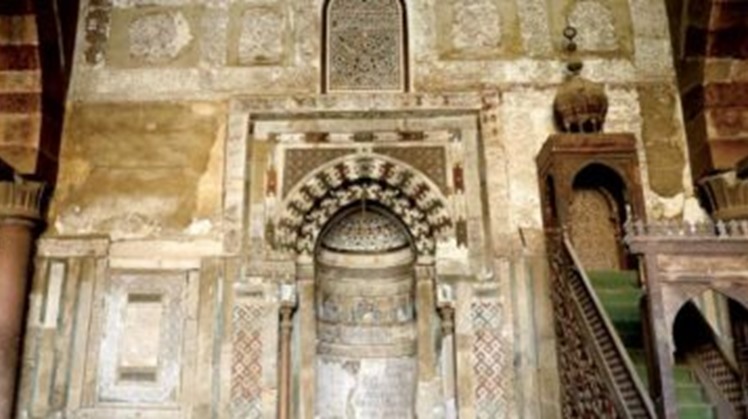Al-Tanbugha Al-Mardani Mosque is one of Cairo's historical mosques, located in the Darb al-Ahmar area, dating back to the Mamluk era, and it is distinguished by a unique Islamic architectural style. It was built in 739 AH / 740 AH - 1338 AD / 1339 AD, through al-Tanbugha Abdullah al-Mardani al-Saqi was one of the Mamelukes of Sultan al-Nasir Muhammad bin Qalawun, who received good treatment from the Sultan.
Al-Tanbugha Al-Mardani Mosque
The story of building the mosque goes back to a story characterized by loyalty. In the book “The Mosques of Egypt and Its Righteous Saints,” it is told about the passion of Sultan Al-Nasir Muhammad for his kings al-Tanbugha al-Mardani, that he took over his own nursing when he fell ill until Oufi, so al-Tanbugha liked to establish a mosque for him towards a quarter of Prince Tughji outside the door Zewaila, and in the year 738 AH, Al-Maradani bought several houses from their owners without the consent of their owners, and Sultan Al-Nasho commissioned the building of the aforementioned mosque. They spent a lot of money on its architecture after the buyer bought it, so they did not grow up with anything from it, then the al-Nasho took over the building of the Mardani Mosque until it was completed in the best way and the expense of 300 thousand dirhams came, except for what the Sultan bestowed upon him in terms of wood, marble, and other things.
The Al-Tanbugha Al-Mardani Mosque was built according to the pattern of the collective mosques (mosques). The dimensions of the mosque are: width 20 m, length 22.5 m, and in the middle of it is a courtyard surrounded by four corridors, the deepest and largest of which is the corridor that takes the direction of the prayer direction. The mosque has a dome with eight granite columns that precede the mihrab, and in the middle of the courtyard is an octagonal (eight-sided) marble fountain, and the façade of the northern portico is covered with beautiful marble inscribed with the date of construction, and the rest of the parts of the qibla wall are covered with a fine marble lining inlaid with seashell.
And on the door of the main mosque on the seaside, he wrote above it: (In the name of God, the Most Gracious, the Most Merciful, He lives in the mosques of God. He who believes in God and the Last Day. " The colored one has inscriptions engraved with seashells, and between them are minute circles in which he wrote in Kufic script: “O you who believe, bow down and worship your Lord and do good that you may prosper.” To the right of the pulpit is installed a marble plaque inscribed with the name of the mosque’s builder and the year of the completion of its construction, in which it says: “In the name of God, the Most Gracious, the Most Merciful, established this blessed mosque, the poor servant to God Almighty, who is seeking the forgiveness of his Lord, al-Tanbugha, the royal Saqi of the Nazarene. And that is in the months of the year forty and seven hundred, and may God bless our master Muhammad and his companions.
 Sun, Apr. 25, 2021
Sun, Apr. 25, 2021